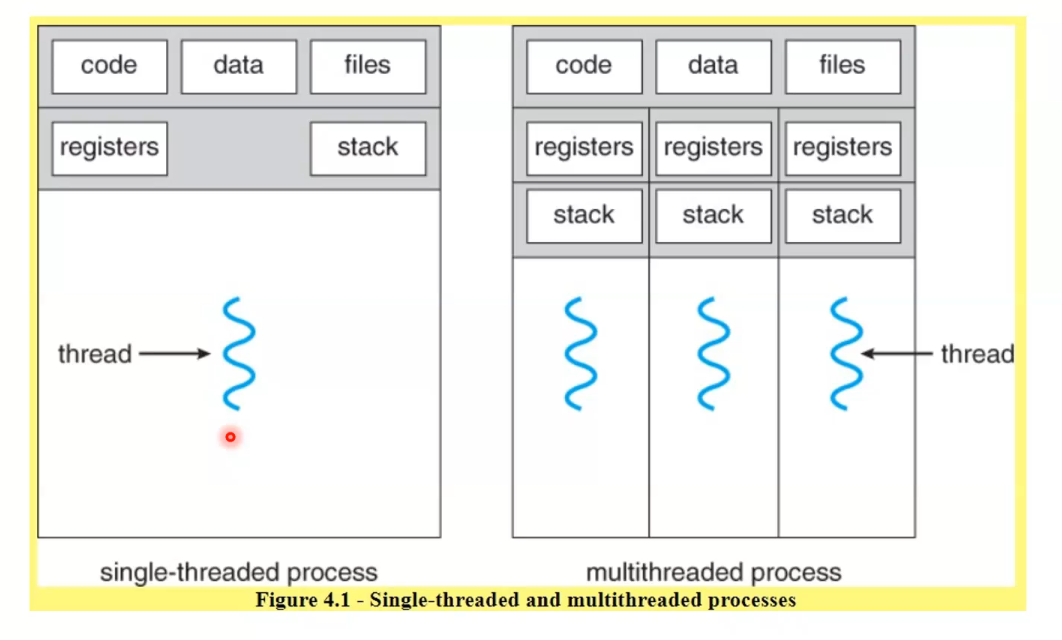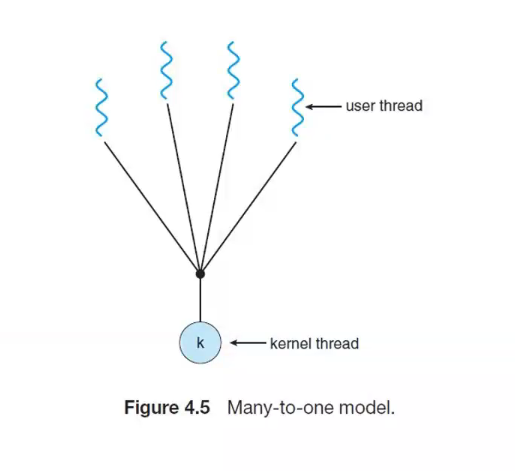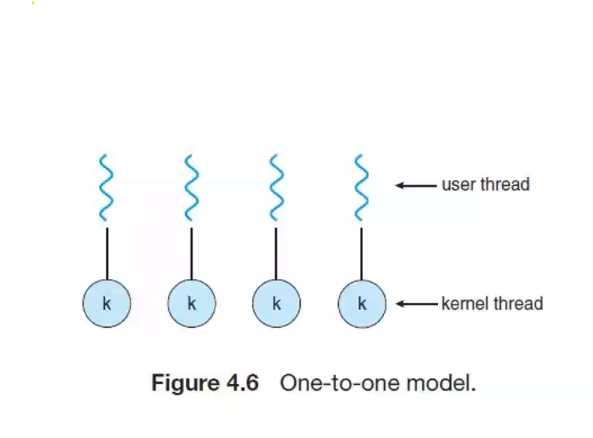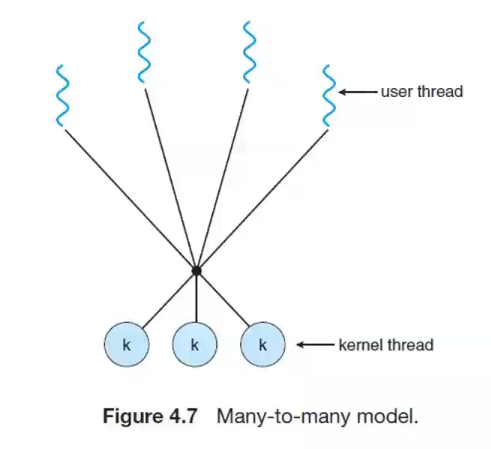Thread
-
A thread is a path of execution within a process
-
A thread is a basic unit of CPU utilization, consisting of a program counter, a stack, and a set of registers, (a thread ID).
-
A thread is also called a lightweight process
-
THreads are very useful in mordern programming whenever a prcess has multiple tasks to perform independently of the others.
-
A process can contain multiple threads.
-
This is when one of the tasks may block, annd it is desired to allow the other tasks to procees without blocking.

Benefits of multithreaded programming
REsource sharing: this quality is especially useful in designing user interfaces
Scalability:
Responsiveness
Economy
Multithreading Models
2 types: user threas and kernal threads
1. many to one model
- maps many yserr-level threads to one kerne thread.
- the entire process will blocke if a thread makes a blocking system call.
- beacuase only one thread can access the kenel at a time, multiple threads are ubable to run in parallel on multicore systems.
adv
- less overhead
- eady to manage
dis-adv
- if one is block all other thread is blocked

2. ONe to one model
- maps each user thread to kernel thread
- allows meltiple threads to run in parallel on multiprocessors
- only dreaback to this model is that creating a user thread requires creating the correstpoding kernell thread.
adv
- cuncurrency achieved
dis-adv
- more overhead

3. many to many model
- multiplexes many user-level threads to smaller or equal number of kernel threads.
- number of kernel threads may be specific to either a particular application or a particular machine.
- developers can create as many user threads as necessary
- when a thread perrdorms a blocking system call the kernel can schedule another thread for execution
adv
- Better concurrency
